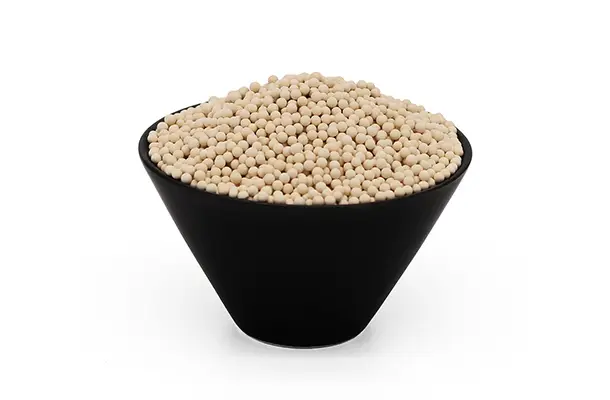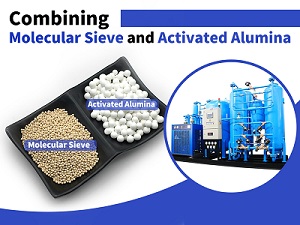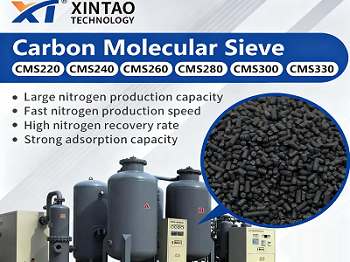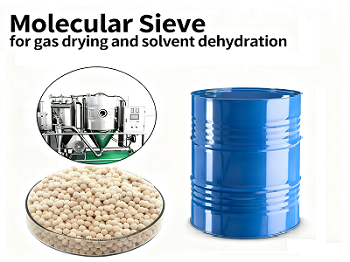Table of Contents
ToggleOxygen Molecular Sieve for Oxygen Concentrator Repair
The oxygen molecular sieve uses the difference in the adsorption capacity of molecular sieves for different gas molecules to preferentially adsorb nitrogen, thereby enriching oxygen. At the same time, the oxygen zeolite molecular sieve also involves the maintenance and troubleshooting of oxygen generator equipment in equipment maintenance.
Working Principle of Oxygen Generator

The oxygen molecular sieve is an indispensable part of the oxygen generator, which uses the difference in the adsorption capacity of molecular sieves for different gas molecules in the air to achieve oxygen separation. Molecular sieves have a strong adsorption capacity for nitrogen and a relatively weak adsorption capacity for oxygen. Under pressurized conditions, air enters the adsorption tower equipped with molecular sieves, and impurities such as nitrogen are adsorbed by the molecular sieve, while oxygen is output through the adsorption tower and becomes oxygen-rich gas. When the molecular sieve in the adsorption tower is saturated with adsorption, the molecular sieve is desorbed by decompression to release the adsorbed impurities such as nitrogen, thereby realizing the regeneration of the molecular sieve and the next round of adsorption and separation process.
Common Problems of Oxygen Generator
The main components of the oxygen generator include compressor, filter, pressure valve and molecular sieve. Although the performance of the oxygen generator is reliable, there may be some problems with its performance. The most common problems include reduced oxygen output, abnormal sounds, and power failures. Reduced oxygen production may be caused by unclean filters, pipeline leakage, compressor failure, or molecular sieve contamination and aging, resulting in reduced purity; abnormal sounds are mostly caused by loose components, worn parts, or compressor failure, and if not handled, it will cause greater damage; power problems involve power cords, sockets, internal power supplies, and circuit board failures, which cause the equipment to fail to switch on and off normally. If the above problems occur, it is recommended to find a professional for repair or go to an authorized repair shop for inspection.
Molecular Sieve Replacement
Determine Zeolite Molecular Sieve Failure: When the purity of oxygen produced by the oxygen production equipment decreases, the output decreases, or the operating pressure of the equipment is abnormal, it may be caused by molecular sieve adsorbent failure. By testing the oxygen purity with professional testing instruments and analyzing the operating parameters of the equipment, it can be determined whether the molecular sieve needs to be replaced.
Replacement Steps: First, cut off the power supply of the equipment, vent the pressure in the equipment, and then open the molecular sieve adsorption tower of the equipment. Carefully remove the failed zeolite desiccant, and be careful to avoid damaging the structure and pipelines in the adsorption tower. Load the new molecular sieve beads into the adsorption tower according to the specified filling amount and filling method, ensuring that the molecular sieve is evenly distributed and the filling height meets the requirements. After filling, seal the adsorption tower and debug and test run the equipment.
Molecular Sieve Activation and Regeneration
Applicable Situations: If the molecular sieve desiccant has degraded performance due to excessive adsorption of moisture or impurities and has not yet completely failed, activation and regeneration can be considered.
Regeneration Method: Usually heated and purged. The adsorption tower containing the molecular sieve adsorbent is heated to a certain temperature, and a dry gas (such as nitrogen) is introduced for purging to desorb the moisture and impurities adsorbed on the molecular sieve and discharge the equipment with the purging gas. During the regeneration process, the heating temperature and the flow rate and pressure of the purging gas must be strictly controlled to ensure that the performance of the molecular sieve is effectively restored. After regeneration, let the adsorption tower cool naturally to room temperature and put it back into use.
Inspection and Maintenance
Daily Inspection: During the operation of the equipment, the operating status of the molecular sieve adsorption tower should be checked regularly, including parameters such as pressure, temperature, and inlet and outlet gas flow. Observe whether the adsorption tower has leakage, vibration, and other abnormal phenomena, and listen to whether the sound of the equipment is normal.
Regular Maintenance: Check the oxygen molecular sieve bead at regular intervals. The adsorption performance of the molecular sieve can be analyzed by sampling, or its appearance can be checked for damage, powdering, etc. At the same time, the pipelines, valves and other components related to the molecular sieve should be inspected and maintained to ensure that they are well sealed and flexible in operation, so as to ensure the stable operation of the entire oxygen production system.
Xintao Oxygen Molecular Sieve

13X HP Molecular Sieve
Size: 0.4-0.8mm/ 1.6-2.5mm beads

Lithium Molecular Sieve
Size: 0.4-0.8mm/ 1.3-1.7mm beads






